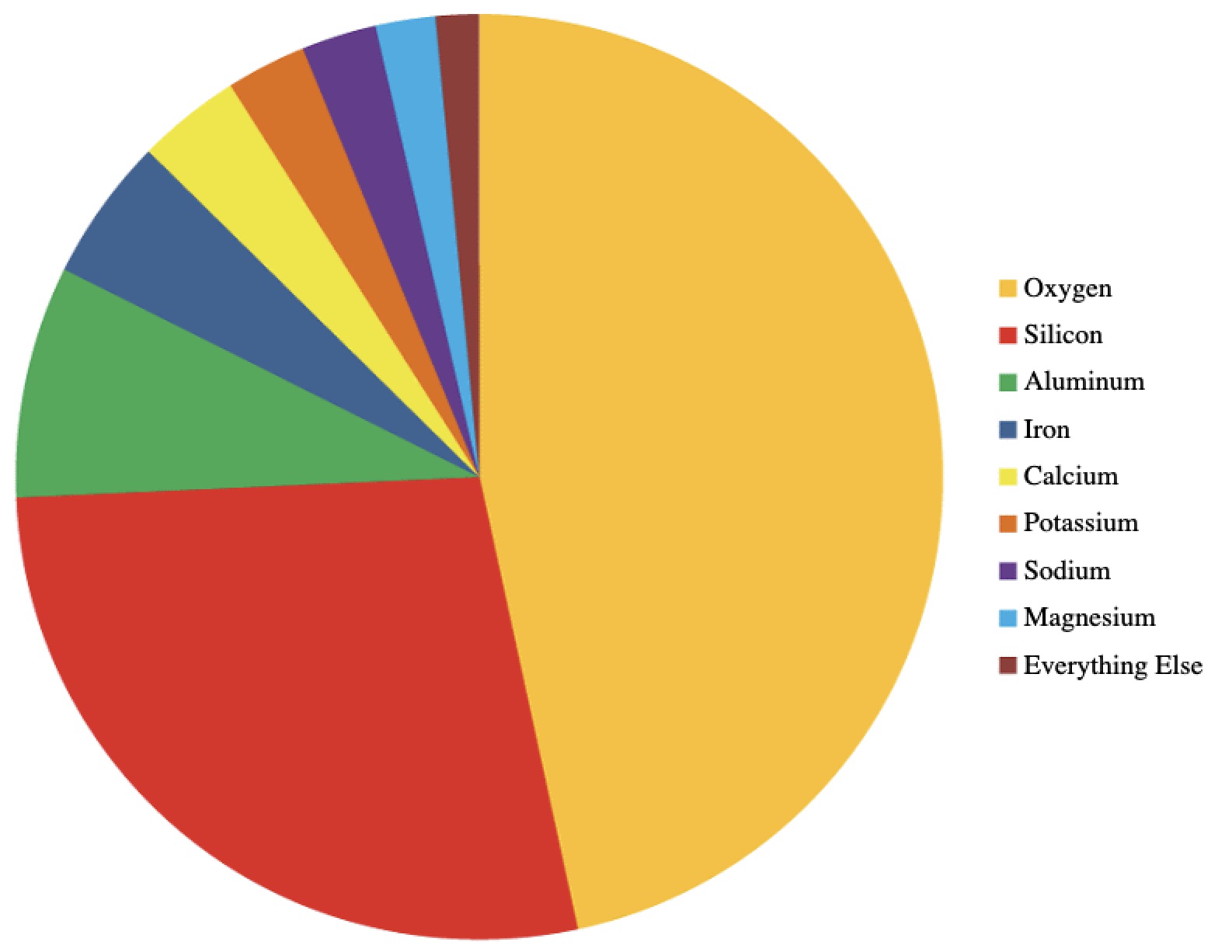The original question was: If there is life on any other planets, is it highly likely to be Carbon based than any other elements, for instance Silicon?
I am asking this question because, almost all the discussion of Extraterrestrial life that I have seen is Carbon based. Whenever they find a new planet, possibility of life is speculated on the basis of existence of water in liquid form, which is a necessary condition for life forms similar to that of Earth. I cannot understand, what is this big thing with water and carbon ?
Physicist: Silicon and carbon show up in the same column on the periodic table, meaning that they share a lot of chemical properties. In particular, they both want to form four bonds with other atoms. So you can be forgiven for thinking that what works for carbon (like biochemistry) should work for silicon.

Left: Methane and silane are an example of carbon and silicon’s (occasionally) similar properties. That similarity leads to speculation about… Right: silicon-based life, such as the Horta which, like all silicon life, is immune to mind probes. That’s just science.
We can’t predict what other forms of life may be like, but everything we’ve seen here on Earth says that life needs totally over-the-top chemical complexity. As far as we know, “lots of carbon” is the only option if you want a huge variety of dynamic, stable, and stunningly complex molecules with thousands of atoms.
Carbon has a couple things going for it that silicon doesn’t. Carbon seems to be perfectly happy to form arbitrarily large and complex molecules, while silicon generally doesn’t. More than that, when carbon oxidizes if forms carbon dioxide and monoxide, which are gases even at low temperatures and are (evidently) fairly easy to break apart. That property (making gases with oxygen that aren’t too hard to unmake) means that carbon is available as a building block for anything at the bottom of the food chain playing the “anchor and filter” gambit (like plants).

Despite carbon dioxide being a trace gas in the atmosphere, plants filter it out to make food and more plant. And despite that rock face having a hell of a lot silicon (comparatively), the tree leafs it where it is.
Silicon on the other hand mostly forms solid minerals (which is why you’re not breathing it right now) which are very difficult to chemically break apart. It wasn’t even known to be an independent element until well into the 19th century, because of how difficult it is to isolate it from oxygen and it’s always found chemically bound to oxygen. Even worse, silicon doesn’t bind with itself nearly as well as carbon does. That’s an an unfortunate property to miss, because without it larger/complicated molecules are far less likely or stable.
Carbon is a major, early product of stellar fusion, which is why it’s the fourth most common element in the universe. Because of that, a lot of astronomers suspect the existence of “carbon worlds” (which are exactly what you think they are). But Earth is decidedly not a carbon world.

Earth’s crust: oxygen (46.6%), silicon (27.7%), some other stuff (25.7%), and way down the list, carbon (0.03%).
Despite what you may have heard (and about a fifth of what you’re made of) there is surprisingly little carbon on Earth. Silicon is the second most abundant element in the crust and about a thousand times more common than carbon. Compared to the universe at large, Earth is very silicon rich and carbon poor. The biosphere is a razor-thin spiderweb of living stuff hemmed in by a heck of a lot of stuff that can never be alive.
Here’s the point: if silicon life was going to happen anywhere, it should be happening here. If some kind of alien silicon life were to happen to drop in, it would find Earth a lot more palatable than we do. It wouldn’t have to scrape by on trace elements, the way poor schlubs like all known life has to.
Unfortunately, we only have a few data points from life here on Earth and they’re all related to each other. Carbon seems to be uniquely able to form fantastically complex structures and water, while not necessarily unique, is made of some of the most common material in the universe (hydrogen and oxygen) and provides a great medium for life and chemistry.
Speculation is fun, but actual knowledge comes from the world around us. What we really need is experience with alien environments that have some possibility of supporting non-carbon, non-watery life. Saturn’s moon Titan has a dense atmosphere, methane and ethane rain, rivers, and oceans, and zero liquid water (it’s -180°C over there), so it’s both very alien and supportive of much greater chemical complexity than, say, our Moon. Of the places to check out “nearby”, Titan is at the top of the list. But considering how short that list is, it may be that we’ll see the first evidence of non-standard alien life in the atmospheres of exoplanets. We’ve found thousands of those (which is less than a drop in the bucket) and, while we can’t actually get a picture of any of those planets, the tiny light that bounces off of them or filters through their atmospheres carries a lot of information (which we can use to see if there’s Earth-ish life present).
Alternatively, we could just get SETI to start sending dinner RSVPs into deep space with a choice between “chicken” and “bucket of sand”, then wait for the responses to roll in. That should do it.







Thanks! Brief and informative with an entertaining flair.
Wonderfully concise yet refreshingly original!
There was a science fiction book, where astronauts from Earth arrived into a planet on which some plants grew. But after some time it turned out that these were not plants, but animals that moved very slowly, 10 thousand times slower than we move. The life on that planet was silicon-based.
Human way of thinking is very anthropomorphic. In 99% of science fiction books and movies the creatures on remote planets all look like humans on Earth.
There was some movie of 1990-s where there was an underground world on Earth, and in that world dinosaurs evolved into sapient creatures. Those creatures looked exactly like humans and surprisingly the women (descendants of dinosaurs) had breasts like the human women, which is absurd, because dinosaurs did not breastfeed.
Of course the evolution has the property of convergence, i.e. in the same conditions same life form often develop. For example, many animals developed vision independently, and octopus and human eyes are very similar, but developed absolutely independently. However the eyes of insects are substantially different and use a different principle of processing the light.
So it can be that the life on other planets will be very-very different from the life on Earth. And perhaps it can use very different chemistry as well.
Well said and well reasoned!
Really like the humor here ! And the question is well answered. Carbon likes to combine with the stuff that makes for complexity and therefore the chances for life arriving from it are much greater than for Silicon. Our own planet is rich in Silicon, yet the life forms on it are Carbon based. Kind of boxes it all up, on the Silicon life question. However….nature is full of surprises. We have not really “looked” at, as in the experience of a picture, of these exoplanets mentioned in the answer. The odds are, most if not all of the extraterrestrial life we may or may not find will probably be Carbon based.
A discussion between Neil deGrasse Tyson and comedian Jon Stewart The host, a chemistry major in college, told Tyson his favorite element is carbon, “the slut of the periodic table,” because it “combines with all the other elements.”
if they have humor ..
may send us a bucket of coal.
@mettV We will send them Kardashians
Remember one important point: we are carbon based creatures on a carbon poor planet. Even if there was a likelihood of silicon based life, under what conditions and on what type of world would that life evolve? Carbon rich and silicon poor? Silicon rich and carbon poor (like Earth)? Water? No water? On earth most of the silicon is tied up in oxygen compounds. Would photosynthesis be possible? Metabolism? These are all questions that would need to be addressed. I’m not a biochemist so I will leave it to others to gives those answers.
There is also a matter of scale. A word of speculation:
Consider the earth, full of SiO2 which, combined with other elements, are the basis of most contemporary technology. We are pushing towards the Singularity (when ai becomes self aware) and many other life-like manifestations.
I do not expect Optimus Prime or Megatron nearby, but if you add to the mix the lightning all around us, the mega magnetic field and phenomena like the Van Allen belt, at least hypothetically there could be a real Gaia (Gea) under our feet.